SIM-LESS Texting With SiPy (BLE + Sigfox)
by Antoine de Chassey in Circuits > Wireless
1652 Views, 13 Favorites, 0 Comments
SIM-LESS Texting With SiPy (BLE + Sigfox)
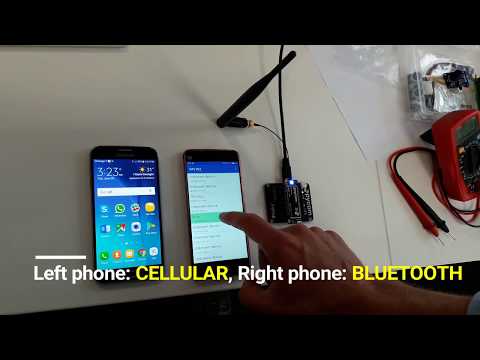
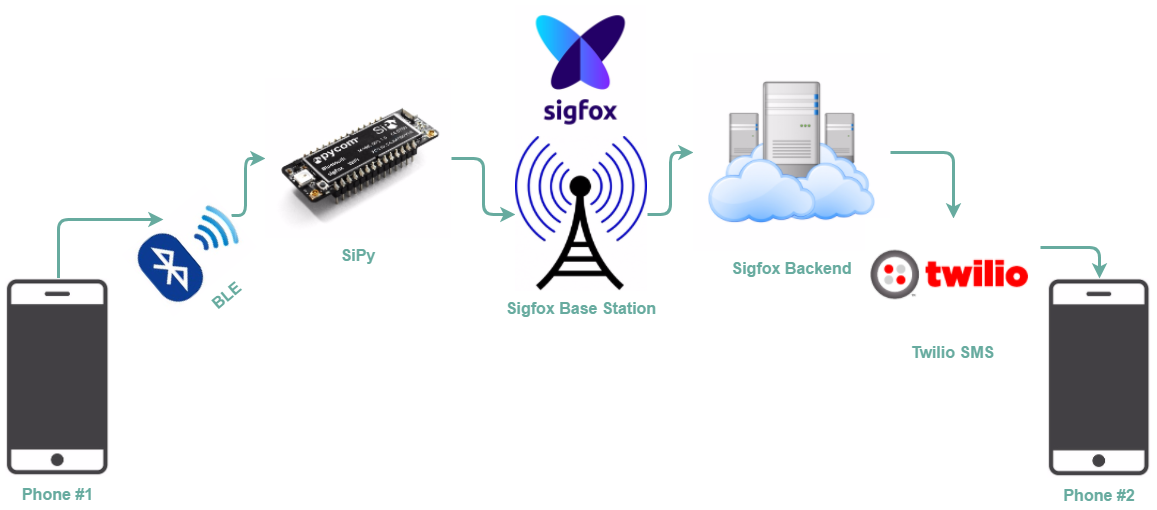
Imagine if you were lost in the middle of nowhere and needed some help? Or more simply, if you had no phone network coverage and needed to send an important message?
Well, Sigfox allows you to send a small message to a contact of your choice by using a third-party texting API. In this tutorial, we will use Twilio.
You will see how to send text messages with only a bluetooth connected phone!
Check the video presentation.
Hardware Requirements
- A SiPy board (+ an expansion board used for flashing)
- An Android phone with Bluetooth (BLE supported)
SiPy
Clone the repo:
git clone https://github.com/AntoinedeChassey/SiPy_BLE_text...
Twilio
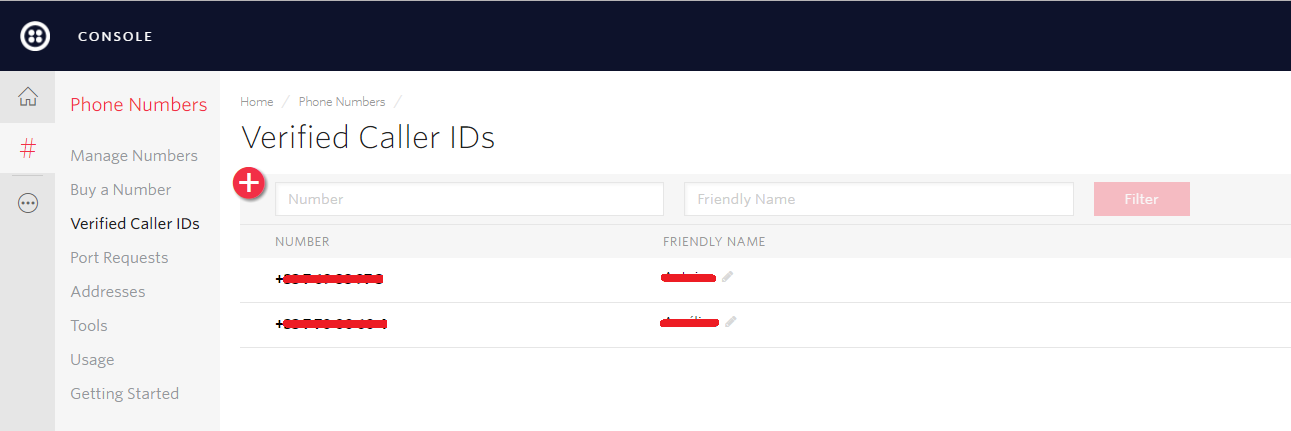
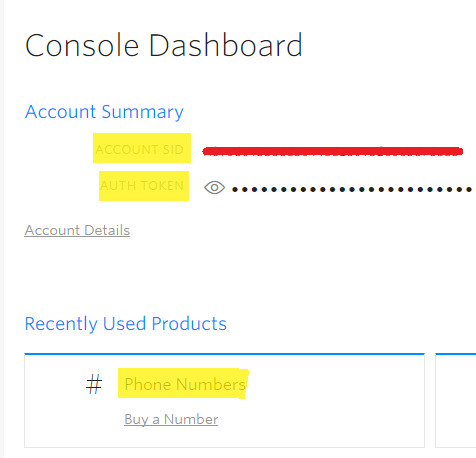
- Sign up for free here
- Add new numbers in the "Verified Caller IDs" (phone numbers of the contacts you wish to send messages)
- Take note of your generated Twilio Phone Number, ACCOUNT SID and Auth TOKEN
EvenNode
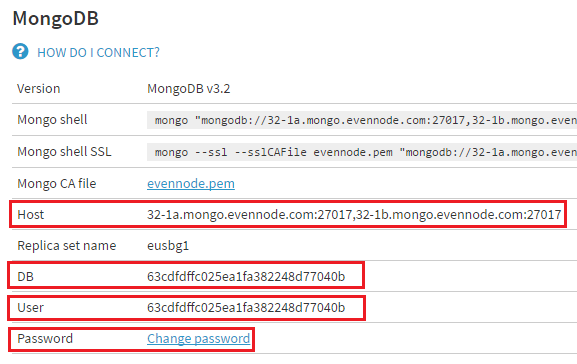
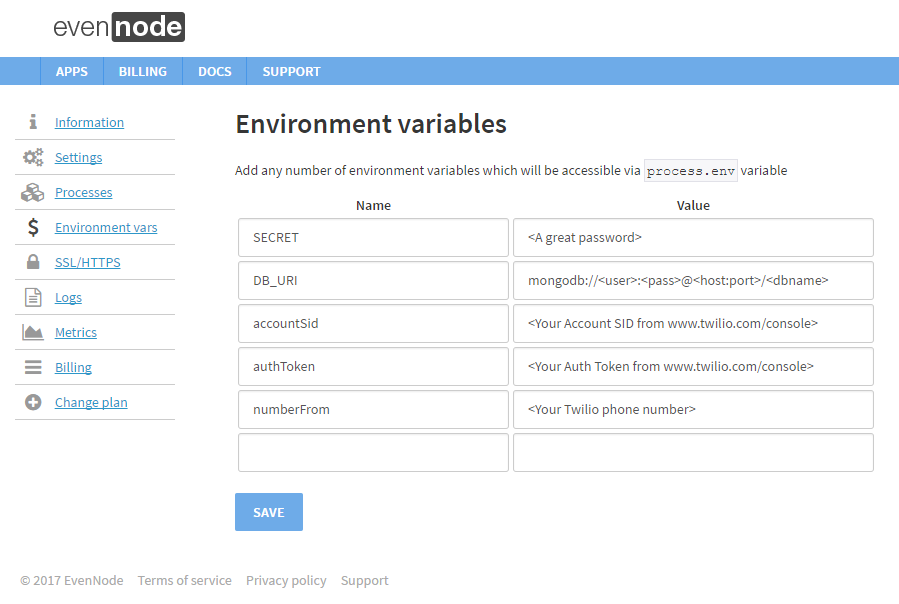
- Sign up for free here
- Log in EvenNode and create a Node.js free plan
- Make sure to set the MongoDB password
- Now go in the "Environment vars" section (https://admin.evennode.com/a/d//environment-vars) and set the following variables (see image)
- Once done, make sure you are in the API folder in order to ONLY push the web app to Evennode and not the whole repository previously cloned:
cd SiPy_BLE_texting/API
- Follow the Git deployment guide: https://www.evennode.com/docs/git-deployment
You may have to wait 1 or 2 minutes for the app to start-up
Check if it runs correctly, you can debug with the "app logs":
https://admin.evennode.com/......./logs
- Create one or two contacts in order to fill the DB (use valid phone numbers, same as the ones you entered on Twilio).
But How Does the API Work?
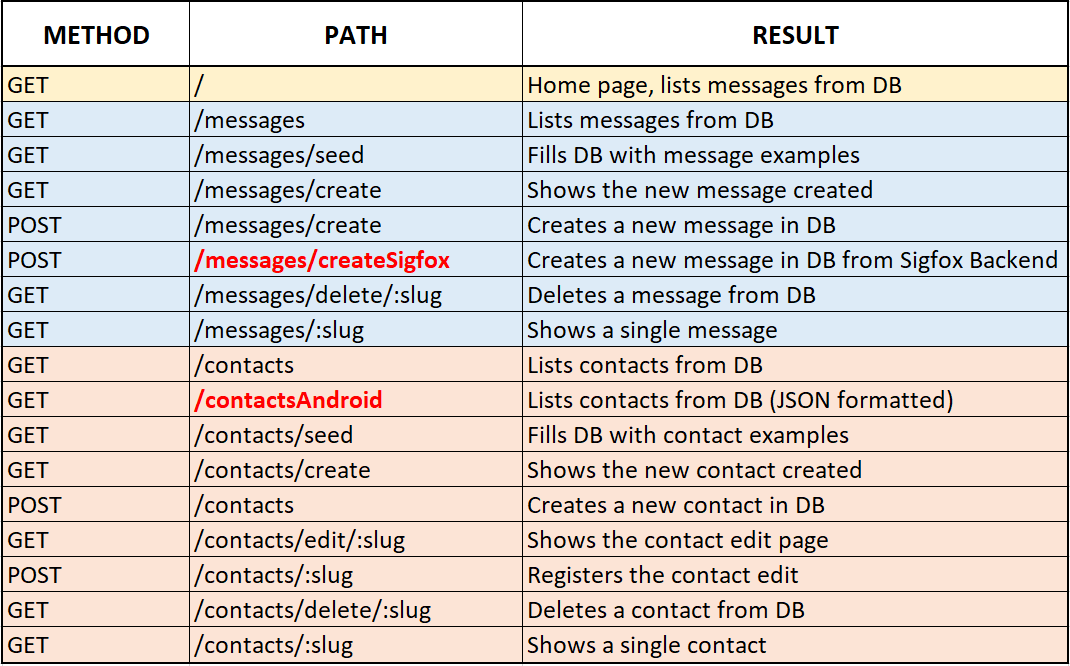
Briefly, the Node.js web application has the following endpoints configured (you can have a look in SiPy_BLE_texting\API\app\routes.js).
The two main ones are in red.
/messages/createSigfox is called from the Sigfox Backend in order to store the incoming message from the SiPy and send it by SMS with Twilio.
function processCreateSigfox(req, res) {
// validate information req.checkBody('device', 'Device is required.').notEmpty(); req.checkBody('time', 'Time is required.').notEmpty(); req.checkBody('data', 'Data is required.').notEmpty(); // if there are errors, redirect and save errors to flash const errors = req.validationErrors(); if (errors) { return res.send('Data format not respected'); } console.log('Adding in DB: ' + JSON.stringify(req.body)); // create a new message const message = new Message({ device: req.body.device, time: req.body.time * 1000, // Sigfox Backend returns Epoch Time in seconds, we have to * 1000 to convert to millis contactId: parseInt(req.body.data.slice(0, 2), 16), // only keep the fist two bytes content: decodeURIComponent(escape(hexToASCII(req.body.data.slice(2)))) // decode the HEX message (11 bytes) }); // save message message.save(function (err) { if (err) throw err; contactsController.getContactByMessageId(message.contactId, function (err, contact) { if (contact) Twilio.sendTwilio(message, contact.phone, function(err, result) { if (result === undefined){ console.log('But could not send message with Twilio, please verify the phone number is correct and verified on Twilio.'); res.sendStatus(401); } else { console.log('Successfully sent message with Twilio!'); res.sendStatus(201); } }); else { console.error('Could not send message because contact was not found with ContactId: ' + message.contactId); // redirect to the newly created message res.sendStatus(404); } }); }); }
The above function that checks the body is not empty and decodes the datasent from the SiPy.
- The first byte (unsigned: from 0 to 255, which equals 2^8 - 1) represents the "contactId" (-> we can store 256 different contacts).
- The eleven remaining bytes (chars) represent the "message" content.
The sendTwilio function is detailed below with the use of this package:
sendTwilio: function (newMessage, numberTo, callback) {
twilioClient.messages.create({ body: newMessage.content, to: numberTo, // Text this number from: numberFrom // From a valid Twilio number }, callback); } function showContactsAndroid(req, res) { // get all contacts Contact.find({}, function (err, contacts) { if (err) { res.status(404); res.send('Contacts not found!'); } // return JSON data res.send(JSON.stringify(contacts)); }); }
We now have to configure the Sigfox Backend callback to tell our message where to go!
/contactsAndroid is called from the Android application to retrieve the contacts stored in the Mongo database (they are then stored in the Android SQLite DB so you can access the contact list without Internet).
Sigfox Backend Callback
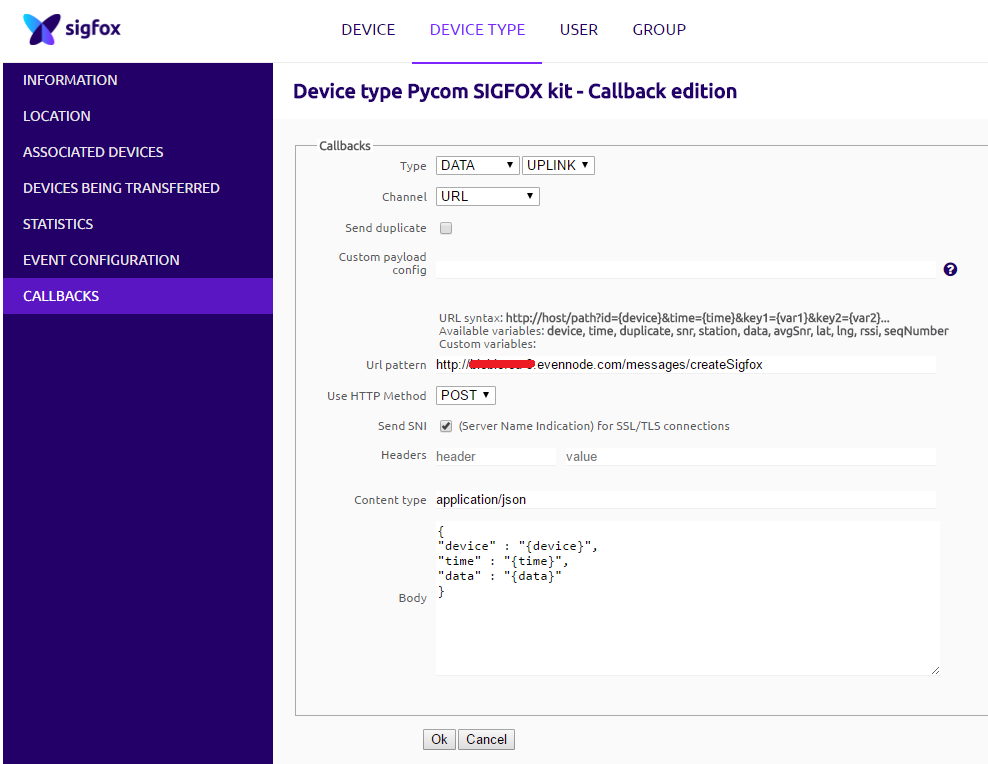
- Log in here
- Go to https://backend.sigfox.com/devicetype/list, click left on your device row and select "Edit"
- Now go to the "CALLBACKS" section on the left, select "new" on the top right, select "Custom Callback"
- Url pattern: http://EvenNode_URL/messages/createSigfox
- Use HTTP Method: POST
- Content Type: application/json
- Body:
{ "device" : "{device}", "time" : "{time}", "data" : "{data}" }- Select "OK" to validate.
Android
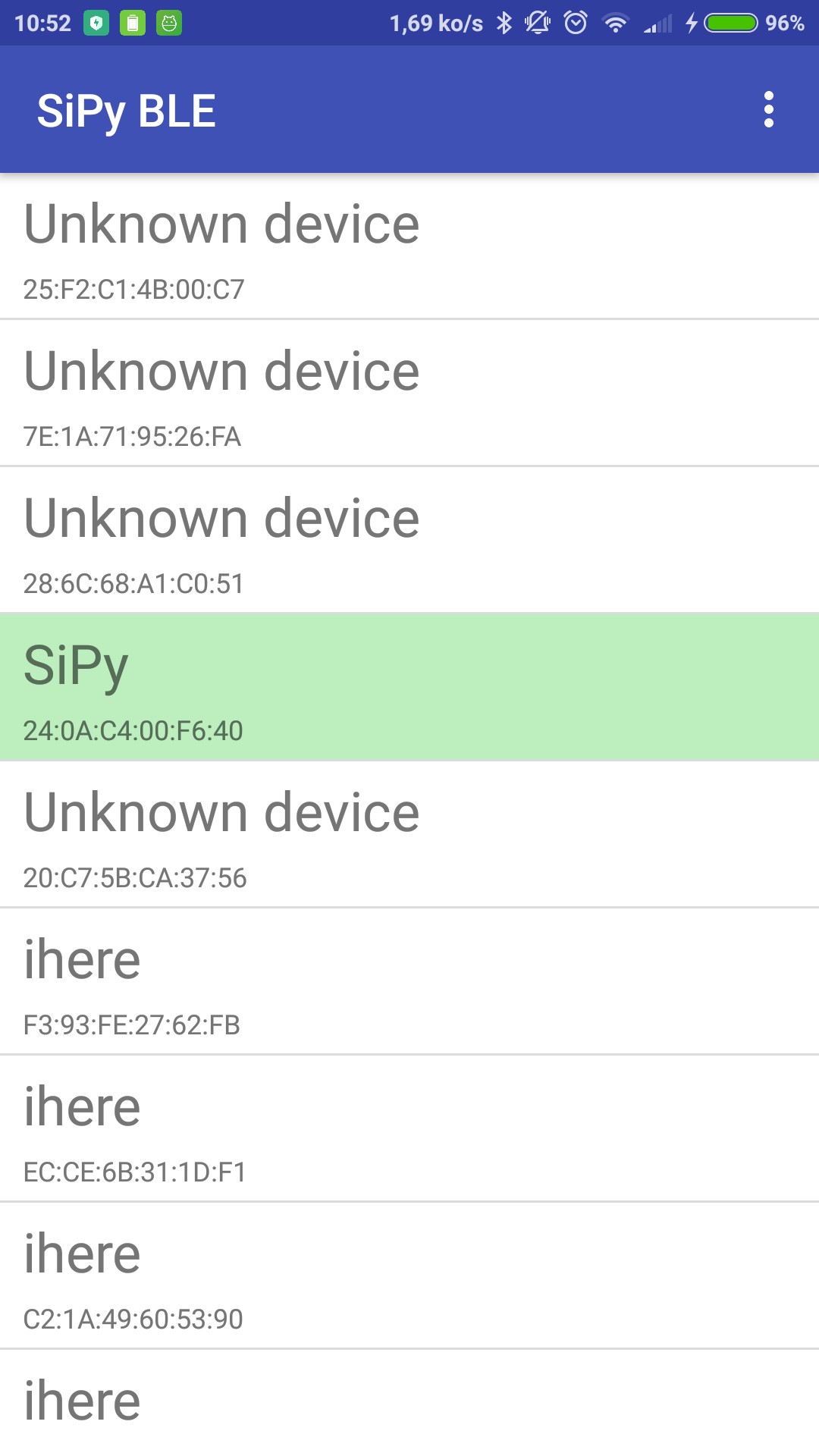
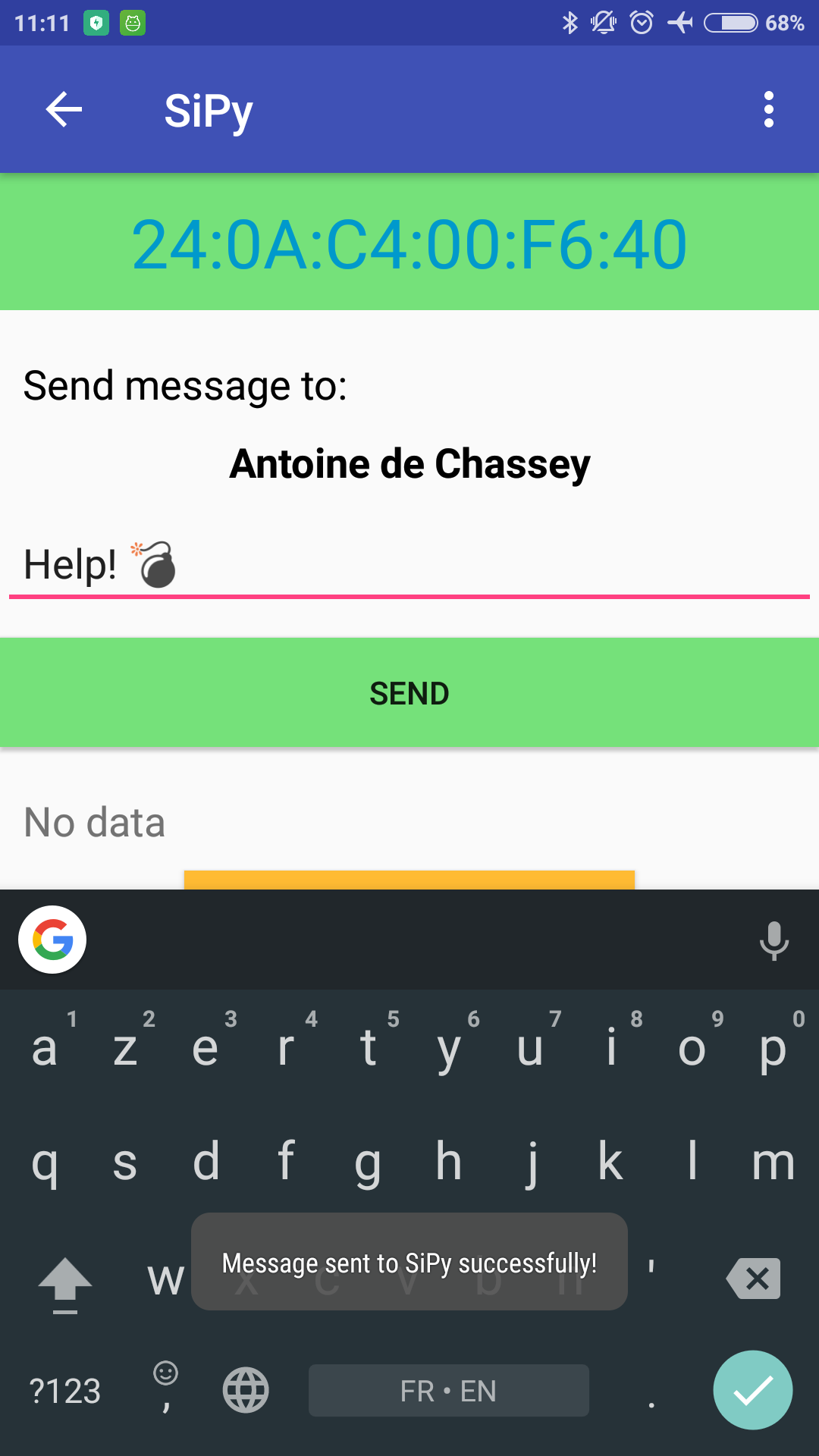
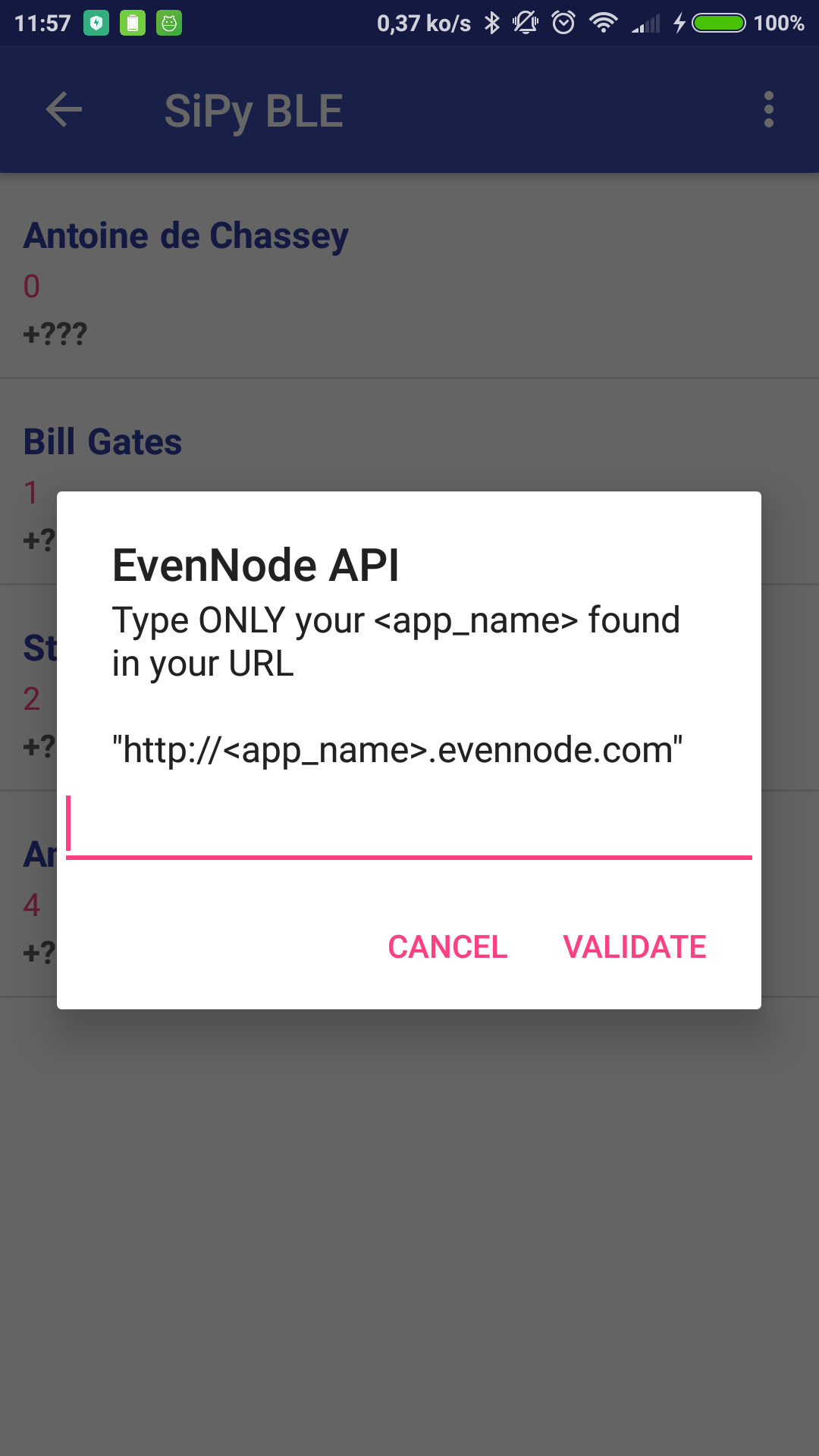
- Download the apk file from https://github.com/AntoinedeChassey/SiPy_BLE_text... (or find it in SiPy_BLE_texting/Android/BLE_to_SiPy.apk).
Usage
- Launch the Android app and connect to your SiPy after authorizing Bluetooth.
Press the + button to select a contact
At first boot, you need to update the local SQLite database with the contacts you created online (on the EvenNode Node.js app), you will be prompted to do so.
Enter the name of your Node.js app (the part after http:// and before .evennode.com).
Validate, you should now see the same contacts you created online!
Pick one, enter some text and send!
Wait 5 seconds and go back to your Node.js app, in the "Messages" section
You should now see the message you just sent with BLE.
If your contact recipient has a valid phone number activated on Twilio, he should have received the text message by SMS!
Sorry this project is a bit complicated due to all the different technologies used.
Above all, it is to show what you could do with SIGFOX and BLE, thanks to SiPy!
Have fun!
Antoine de Chassey